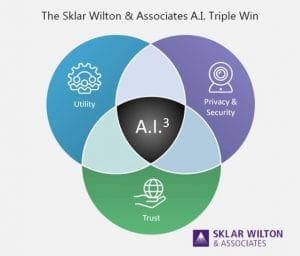While a software-as-a-service model leaves processing in the service provider’s hands, there’s plenty of work left for the IT group when it comes to administering the relationship and in supporting employee users.
For many business leaders, the advantages of software as a service (SaaS) are plentiful compared to on-premises or other cloud delivery architectures. These benefits include faster times to deployment, low administration overhead, infinite scalability, low CAPEX investment and flexible licensing/payment models. That said, SaaS comes with a host of administration tasks, which — if left unchecked — can severely limit the benefits that SaaS offers.
You should establish processes that not only foster communication and collaboration between the SaaS provider and the in-house IT department, but also internal processes that ensure application and data performance, usability and security. Let’s look at what tasks are required to maintain a healthy SaaS portfolio within your organization as well as some new tools that can help streamline administration efficiency.
SaaS administration tasks between business and service provider
Because of your reliance on a third-party SaaS provider to manage the underlying cloud infrastructure, data storage and application delivery methods, it’s critical to be in sync. One way to do this is to be sure that the service provider has multiple points of contact within your business. All too often, a single member of your IT staff will establish the lines of communication with a SaaS vendor. Then, once those employees move on from the company, remaining IT staff must scramble to reestablish those relationships. A better way to manage service provider communication is to assign administration tasks to a team rather than a team member. Missed communications can result in unplanned maintenance windows, missed details regarding new feature announcements or other important information.
Those tasked with managing SaaS contracts must fully understand how to handle licensing and service level agreements (SLA). Because every SaaS contract is different, the process of adding and removing licenses — as well as proper management of unused licenses — is critical to squeezing out the most value for your money. Understand the various license tiers and what differentiates them from a features perspective. Also, be sure to develop a strategy to reduce the number of idle or unused licenses that waste money.
DevPlans should be developed to ensure the proper balance between speed-to-delivery of a service and a reduction of idle-license spend. Finally, understand your leverage when it comes to missed SLAs. Make certain you’re getting what was agreed upon when services become unavailable according to SLA guidelines.
Lastly, be prepared for SaaS license renewals as well as the potential of a full service termination. Getting ahead of the this will lessen the risk of a disruption in service due to a misstep in the renewals or termination process. The weeks and months before a service renewal is also a great time to reassess the value of all services in the company’s application portfolio. That way, steps can be put in place to help with the renegotiation of contracts, re-training of employees on changed application usability or migration of data from one cloud provider to another.
Administration of SaaS tools within the business
The IT department must also look inwardly when getting serious about SaaS administration tasks. The initial setup and customization of the cloud-delivered application must be performed by a well-trained admin to be sure it’s done according to the provider’s best-practice standards. Additionally, administrators must stay informed of any feature adds/removals, maintenance windows and IT security-related information.
Onboarding and processes for SaaS services should be implemented to quickly bring on new employees. Even more importantly, when employees leave, administrators must be able to remove access for security purposes. SaaS platform integrations into existing user management tools or SaaS management platforms can help to automate and increase the speed/accuracy of these steps.
The SaaS applications and services that are approved and supported by the IT department must be well known to the business’s user base. An easy-to-access and understand portfolio of supported SaaS apps should be made available. This portfolio can not only be used to help eliminate shadow IT, but it’s also a great way to begin evaluating the portfolio to identify overlapping, underutilized and abnormally expensive tools within the organization….[…] Read more »…..

















ROLE DESCRIPTION
We are looking for a Membership Manager to join the company and take on one of the most opportunistic roles the industry has to offer. This is a role that allows for you to create and develop relationships with leading solution providers in the enterprise technology space. Through extensive research and conversation you will learn the goals and priorities of IT & IT Security Executives and collaborate with companies that have the solutions they are looking for. This role requires professionalism, drive, desire to learn, enthusiasm, energy and positivity.
Role Requirements:
Role Responsibilities:
Apex offers our team:
Entry level salary with competitive Commission & Bonus opportunities
Apex offers the ability to make a strong impact on our products and growing portfolio.
Three months of hands on training and commitment to teach you the industry and develop invaluable sales and relationship skills.
Opportunity to grow into leadership role and build a team
Extra vacation day for your birthday when it falls on a weekday
All major American holidays off
10 paid vacation days after training period
5 paid sick days
Apply Now >>